Miss Summerbee Sweater |
|||||||||||||||||||||||||||||||||||||
 |
 |
||||||||||||||||||||||||||||||||||||
Knitted sweater in DROPS Flora. The piece is worked top down with double neck, round yoke and relief-pattern on the yoke. Sizes S - XXXL.
DROPS 236-2 |
|||||||||||||||||||||||||||||||||||||
|
------------------------------------------------------- EXPLANATIONS FOR THE PATTERN: ------------------------------------------------------- RIDGE/GARTER STITCH (worked in the round): 1 ridge in height = 2 rounds; Knit 1 round and purl 1 round. ELEVATION (back of neck): To make the back of the neck slightly higher when working the yoke, you can work an elevation as described here. Skip this section if you do not want an elevation. Insert 1 marker at the beginning of the round (mid-back). Start from the right side and knit 14-15-16-16-17-18 stitches past the marker, turn, tighten strand and purl 28-30-32-32-34-36 stitches back. Turn, tighten strand and knit 42-45-48-48-51-54 stitches, turn, tighten strand and purl 56-60-64-64-68-72 stitches back. Turn, tighten strand and knit 70-75-80-80-85-90 stitches, turn, tighten strand and purl 84-90-96-96-102-108 stitches back. Turn, tighten strand and knit 98-105-112-112-119-126 stitches, turn, tighten strand and purl 112-120-128-128-136-144 stitches back. Turn, tighten the strand and knit to mid-back. Then work YOKE as described in the text. PATTERN: See diagrams A.1 to A.3. INCREASE/DECREASE TIP (evenly spaced): To work out how to increase/decrease evenly, count the total number of stitches on needle (e.g. 120 stitches), and divide by the number of increases/decreases to be made (e.g. 32) = 3.8. In this example, increase by making 1 yarn over after approx. each 4th stitch. On the next row work the yarn overs twisted to avoid holes. When decreasing, knit together approx. each 3rd and 4th stitch. DECREASE TIP (for sleeves): Start 3 stitches before the marker, knit 2 together, knit 2 (marker sits between these 2 stitches), slip 1 stitch as if to knit, knit 1 and pass the slipped stitch over the knitted stitch. ------------------------------------------------------- START THE PIECE HERE: ------------------------------------------------------- SWEATER – SHORT OVERVIEW OF THE PIECE: The neck and yoke are worked in the round with circular needle, from mid back and top down. The yoke is divided for body and sleeves and the body is continued in the round. The sleeves are worked with short circular needle/double pointed needles. DOUBLE NECK: Cast on 120-124-130-136-140-146 stitches with DROPS Flora using 2 short circular needles size 2.5 MM = US 1.5 and 3 MM = US 2.5 held together. Remove the needle size 3 MM = US 2.5 (doing this gives you an elastic cast-on edge) keeping the stitches on the needle size 2.5 MM = US 1.5. Work rib in the round (knit 1, purl 1) for 9 cm = 3½". Fold the neck double to the inside and work 1 more round of rib, working every 2nd stitch together with its corresponding stitch on the cast-on edge. You now have a double neck. Change to circular needle size 3 MM = US 2.5. Knit 1 round and increase 32-36-38-40-44-46 stitches evenly spaced - read INCREASE/DECREASE TIP = 152-160-168-176-184-192 stitches. Insert 1 marker in the middle of the round (mid-front) – this is used when measuring the yoke. You can now work an ELEVATION at the back – read description above. If you do not want an elevation go straight to YOKE. YOKE: Work 2-2-6-6-8-10 rounds of stockinette stitch, then work 2 RIDGES over all stitches – read description above. REMEMBER THE KNITTING GAUGE! Work A.1 in the round over all stitches, increasing as follows at each arrow: Arrow-1: Increase 40-40-48-56-64-64 stitches evenly spaced = 192-200-216-232-248-256 stitches. Arrow-2: Increase 48-52-60-68-64-74 stitches evenly spaced = 240-252-276-300-312-330 stitches. When A.1 is finished work A.2 over all stitches, increasing as follows at each arrow: Arrow-3: Increase 102-108-114-126-126-138 stitches evenly spaced = 342-360-390-426-438-468 stitches (you increase more stitches here as the pattern tightens the piece slightly). Arrow-4: Decrease 6-6-6-12-12-12 stitches evenly spaced – remember INCREASE/DECREASE TIP = 336-354-384-414-426-456 stitches. Arrow-5: Increase 24-30-30-30-36-42 stitches evenly spaced = 360-384-414-444-462-498 stitches. Arrow-6: Increase 16-24-26-28-34-38 stitches evenly spaced = 376-408-440-472-496-536 stitches. The increases are finished in sizes S, M and L. When A.2 is finished work A.3 over all stitches. Increase as follows at the arrow (applies only to XL, XXL and XXXL): Arrow-7 (XL, XXL and XXXL): Increase 16-24-24 stitches evenly spaced = 488-520-560 stitches. OVERVIEW OF THE NEXT SECTION: Continue with A.3 as described below. In addition the yoke is divided for the body and sleeves. Read PATTERN and DIVIDING FOR BODY AND SLEEVES before continuing. PATTERN: S and M: When A.3 is finished (a total of 3 rows of knots), continue with stockinette stitch. NOTE: The yoke is divided for the body and sleeves before A.3 is finished. L: When A.3 is finished, work the first 6 rounds in the repeat marked with a star (a total of 4 rows of knots), then continue with stockinette stitch. NOTE: The yoke is divided for the body and sleeves before A.3 is finished. XL, XXL and XXXL: When A.3 is finished, work the repeat marked with a star until you have a total of 5-6-6 rows of knots, then continue with stockinette stitch. NOTE: The yoke is divided for the body and sleeves before A.3 is finished. DIVIDING FOR BODY AND SLEEVES: When the yoke measures 21-23-25-27-29-31 cm = 8¼"-9"-9¾"-10⅝"-11⅜"-12¼" from the marker, divide for the body and sleeves as follows: Work 56-61-65-72-79-86 stitches as before (½ back piece), place the next 76-82-90-100-102-108 stitches on a thread for the sleeve, cast on 8-8-10-10-12-12 stitches (in side under sleeve), work 112-122-130-144-158-172 stitches (front piece), place the next 76-82-90-100-102-108 stitches on a thread for the sleeve, cast on 8-8-10-10-12-12 stitches (in side under sleeve), work the last 56-61-65-72-79-86 stitches (½ back piece). The body and sleeves are finished separately. The piece is now measured from here! BODY: = 240-260-280-308-340-368 stitches. Finish A.3 as described above – NOTE: After the division, the pattern will not fit under the sleeves; work pattern as far as possible with the remaining stitches under the sleeve in stockinette stitch (the pattern is continued neatly from the yoke on the front and back pieces). When A.3 is finished (a total of 3-3-4-5-6-6 rows of knots), continue with stockinette stitch until the body measures 24 cm = 9½" from the division. Knit 1 round and increase 48-52-56-62-68-74 stitches evenly spaced = 288-312-336-370-408-442 stitches. Change to circular needle size 2.5 MM = US 1.5 and work rib (knit 1, purl 1) for 4 cm = 1½". Bind off a little loosely. The sweater measures approx. 52-54-56-58-60-62 cm = 20½"-21¼"-22"-22¾"-23⅝"-24⅜" from the shoulder down. SLEEVES: Place the 76-82-90-100-102-108 stitches from the thread on the one side of the piece on short circular needle/double pointed needles size 3 MM = US 2.5 and knit up 1 stitch in each of the new stitches cast on under the sleeve = 84-90-100-110-114-120 stitches. Insert a marker in the middle of the new stitches under the sleeve. Finish A.3 in the round as described above. NOTE: After the division, the pattern will not fit under the sleeve; work pattern as far as possible and then the stitches under the sleeve in stockinette stitch. When A.3 is finished continue with stockinette stitch until the sleeve measures 4-4-4-2-3-2 cm = 1½"-1½"-1½"-¾"-1⅛"-¾" from the division. Now decrease 2 stitches under the sleeve – read DECREASE TIP. Decrease like this every 4½-3½-2-2-1½-1½ cm = 1⅝"-1¼"-¾"-¾"-½"-½" a total of 8-10-14-17-18-20 times = 68-70-72-76-78-80 stitches. Continue working until the sleeve measures 39-38-36-35-33-32 cm = 15¼"-15"-14¼"-13¾"-13"-12½" from the division. There is 4 cm = 1½" left to finished length; try the sweater on and work to desired length.. Knit 1 round where you increase 12-14-14-14-14-16 stitches evenly spaced = 80-84-86-90-92-96 stitches. Change to double pointed needles size 2.5 MM = US 1.5 and work rib (knit 1, purl 1) for 4 cm = 1½". Bind off a little loosely. The sleeve measures approx. 43-42-40-39-37-36 cm = 17"-16½"-15¾"-15¼"-14½"-14¼" from the division. Work the other sleeve in the same way. |
|||||||||||||||||||||||||||||||||||||
Diagram explanations |
|||||||||||||||||||||||||||||||||||||
|
|||||||||||||||||||||||||||||||||||||

|
|||||||||||||||||||||||||||||||||||||

|
|||||||||||||||||||||||||||||||||||||
|
Have you made this or any other of our designs? Tag your pictures in social media with #dropsdesign so we can see them! Do you need help with this pattern?You'll find tutorial videos, a Comments/Questions area and more by visiting the pattern on garnstudio.com. © 1982-2024 DROPS Design A/S. We reserve all rights. This document, including all its sub-sections, has copyrights. Read more about what you can do with our patterns at the bottom of each pattern on our site. |
|||||||||||||||||||||||||||||||||||||











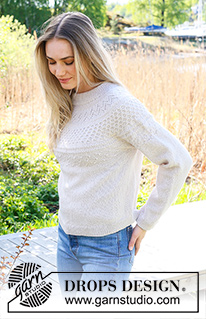


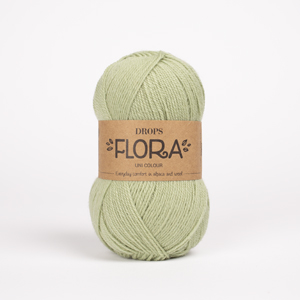
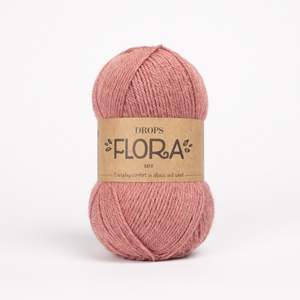














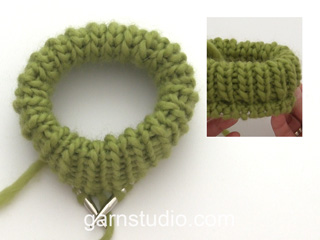














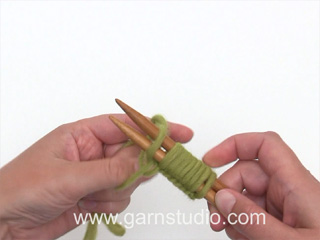



































Comments / Questions (30)
Opskrift 236-2 størrelse XXL Mønster A3 strikkes 3 masker sammen. Skulle der ikķe laves et omslag før og efter? Ellers tages 62 masker ind på en omgang. Der skal ikke tages 14 masker ud før ribkant på ærme. Tværtimod skal man tage 10 masker ind, ellers bliver kanten alt for vid. Mvh Hanne
01.01.2024 - 16:35Thank you for your timely response. I see in my original question that I said Pattern 263-1 in error. I am working on Pattern 263-2. Regarding Diagram A.1, Row 11, you explained it as: 2k, 1p, 3yhop = 1m, 1p, 1k and 2yhop = 1m, 1p. I have no idea what that means and need clarification, please. I am very sorry for referencing the wrong pattern number initially. I need help on Pattern 236-2, Diagram A.1, Row 11. I appreciate you assistance. Thank you
22.11.2023 - 17:09Bev Schuman answered:
Good Lord, I think I got it!!!! Was not reading the chart correctly but thanks to your help I believe I figured it out. If not, I'll be back. Very best regards.
22.11.2023 - 21:48Help please. Pattern 236-1, Diagram A.1, Row 11, I see your answer of:DROPS Design answered: Hi Susanne, you knit the 8 sts like this: 2k, 1p, 3yhop=1m, 1p, 1k, 2yhop=1m, 1p I am sorry, but I do not understand it. I have no idea what "3yhop or 2yhop means. Can you please help me understand how to proceed.? Thank you in advance.
22.11.2023 - 00:12DROPS Design answered:
Hi Bev, You knit 3, purl 1, make 1 yarn over (see diagram instructions on how to work the yarn over on the next round), slip 1 stitch knit-wise, knit 2 togetherand pass the slipped stitch over the knitted-together stitches, make 1 yarn over (see diagram instructions on how to work the yarn over on the next round as it is different from the previous yarn over), knit 1, knit 2 together and make 1 yarn over (see diagram instructions on how to work the yarn over on the next round). Hope this helps and happy knitting!
22.11.2023 - 06:33Bonsoir, j aimerais savoir , qu'elle est l aisance préconisée dans ce modèle ?
12.10.2023 - 18:04DROPS Design answered:
Bonjour Mme Nasri, nous n'utilisons pas ce concept, pour trouver votre taille, mesurez un vêtement similaire que vous avez et dont vous aimez la forme et comparez ces mesures à celles du schéma du bas de page. Choisissez ainsi vous-même l'aisance que vous aimez et qui vous correspond. Vous retrouverez plus d'infos ici. Bon tricot!
13.10.2023 - 08:33Ich habe das Schmuckstück fertig und bin ganz begeistert. Im oberen Musterteil war das Zählen und Stricken für mich recht anstrengend- aber es hat sich absolut gelohnt! Für mich mit 1,72 m habe ich die Ärmel und den Rumpf wesentlich verlängert. Beim ersten Anziehen dachte ich dass die Größe M recht eng sitzt, aber nach Waschen und mehrmaligem Tragen sitzt er nun prima.
07.10.2023 - 23:50Bonjour, Je tricote la taille S du modèle Miss Summerbee Sweater. Lorsque j'ai tricoté le diagramme A3 une fois en hauteur (18 rangs), dois-je le répéter à partir du rang 7 jusqu'au rang 18 ou est-ce que cette répétition n'est valable que pour les grandes tailles ? J'espère que ma question est claire. Merci d'avance pour votre réponse. Bien cordialement. Martine Pelletier
08.09.2023 - 12:34DROPS Design answered:
Bonjour Mme Pelletier, tout va dépendre de votre tension en hauteur, vous allez diviser l'ouvrage quand l'empiècement mesure 21 cm en taille S (à partir du marqueur, après le col), autrement dit, continuez A.3 jusqu'à atteindre cette hauteur, ou bien arrêtez avant pour éviter que l'empiècement ne soit trop long; vous terminerez A.3 (les 3 rangs de noeuds) d'abord sur le dos/devant puis sur les manches. Bon tricot!
08.09.2023 - 16:23Hvis man i A3 på str. XL skal tage masker ud , så kommer mønstret vel ikke til at passe, for så vil knuderne i de efterfølgende omgange da blive forskudt, så de ikke sidder rigtigt over hinanden. Eller har jeg misforstået?
25.08.2023 - 08:47DROPS Design answered:
Hei Helle Jo, men det blir det på de største str. Om du syns forskyvningen blir for synlig, kan du jo fint avslutte med knutene tidligere. mvh DROPS Design
04.09.2023 - 13:22Bei Größe ab XL soll man teilen, bevor A 3 zu Ende ist - aber am Ende von A3 nochmal zunehmen. Die Maschenzahl bei der Teilung ist aber die Maschenzahl NACH der Zunahme. Das kann nicht stimmen, man soll doch vor der Zunahme teilen !!!
09.08.2023 - 15:12DROPS Design answered:
Liebe Frau Kuhn, zuerst stricken Sie A.3 , dann wiederholen Sie die Reihen mit dem Sternch bis ingesamt 5 Runden mit Noppen gestrickt wurden dh 1 Mal A.3 + 1 Mal die Reihen mit den Sternchen; die Reihen mit den Zunahmen wird am Ende vom 1. Mal gestrickt (= nach der Runden mit den 3. Noppen). Sollte Ihre Maschenprobe in der Höhe nicht stimmen, dann stricken Sie diese Zunahme früher, damit die Zunahmen vor der Verteilung kommt. Viel Spaß beim stricken!
09.08.2023 - 17:03Już wszystko jasne wszystko jest opisane czytelnie.:)
19.05.2023 - 19:49DROPS Design answered:
Bardzo się cieszę. Miłej pracy!
22.05.2023 - 12:44Dzień dobry, chce wykonać jeden ze swetrów i zastanawiam się jak zacząć. Czy mam sobie przeliczyć wg próbki ilość oczek na obwód? Przeczytałam cały opis i znalazłam niczego na czym mogłabym się oprzeć .
19.05.2023 - 19:20DROPS Design answered:
Witaj Sabino, w następnym komentarzu widzę, że wszystko się wyjaśniło. Pozdrawiamy!
22.05.2023 - 12:45